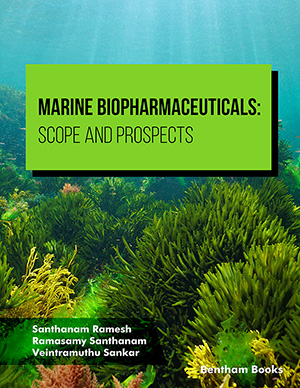Abstract
Background: Currently, cancer continues being a dramatically increasing and serious threat to public health. Although many anti-tumor agents have been developed in recent years, the survival rate of patients is not satisfactory. The poor prognosis of cancer patients is closely related to the occurrence of drug resistance. Therefore, it is urgent to develop new strategies for cancer treatment. Multi-target therapies aim to have additive or synergistic effects and reduce the potential for the development of resistance by integrating different pharmacophores into a single drug molecule. Given the fact that majority of diseases are multifactorial in nature, multi-target therapies are being exploited with increasing intensity, which has brought improved outcomes in disease models and obtained several compounds that have entered clinical trials. Thus, it is potential to utilize this strategy for the treatment of BRD4 related cancers. This review focuses on the recent research advances of dual-target inhibitors based on BRD4 in the aspect of anti-tumor.
Methods: We have searched the recent literatures about BRD4 inhibitors from the online resources and databases, such as pubmed, elsevier and google scholar.
Results: In the recent years, many efforts have been taken to develop dual-target inhibitors based on BRD4 as anti-cancer agents, such as HDAC/BRD4 dual inhibitors, PLK1/BRD4 dual inhibitors and PI3K/BRD4 dual inhibitors and so on. Most compounds display good anti-tumor activities.
Conclusion: Developing new anti-cancer agents with new scaffolds and high efficiency is a big challenge for researchers. Dual-target inhibitors based on BRD4 are a class of important bioactive compounds. Making structural modifications on the active dual-target inhibitors according to the corresponding structure-activity relationships is of benefit to obtain more potent anti-cancer leads or clinical drugs. This review will be useful for further development of new dual-target inhibitors based on BRD4 as anti-cancer agents.
Keywords: BRD4, anti-cancer, combined, drug design, dual-target, enzymatic/non-enzymatic protein.
[http://dx.doi.org/10.2174/0929867321666140303144625] [PMID: 24606519]
[http://dx.doi.org/10.2741/Florence] [PMID: 11487468]
[http://dx.doi.org/10.1186/s12943-018-0915-9] [PMID: 30466442]
[http://dx.doi.org/10.1038/20974] [PMID: 10365964]
[http://dx.doi.org/10.1074/jbc.R700001200] [PMID: 17329240]
[http://dx.doi.org/10.1016/S0014-5793(01)03309-9] [PMID: 11911891]
[http://dx.doi.org/10.1128/MCB.20.17.6537-6549.2000] [PMID: 10938129]
[http://dx.doi.org/10.1073/pnas.1433065100] [PMID: 12840145]
[http://dx.doi.org/10.1016/j.cell.2012.02.013] [PMID: 22464331]
[http://dx.doi.org/10.1038/nature08397] [PMID: 19794495]
[http://dx.doi.org/10.1016/j.molcel.2014.05.016] [PMID: 24905006]
[http://dx.doi.org/10.1128/JVI.00804-06] [PMID: 16928766]
[http://dx.doi.org/10.1128/MCB.01341-10] [PMID: 21555454]
[http://dx.doi.org/10.1016/j.molcel.2015.10.033] [PMID: 26626481]
[http://dx.doi.org/10.1016/j.ddtec.2016.05.003] [PMID: 27769352]
[http://dx.doi.org/10.1016/j.molcel.2012.12.006] [PMID: 23317504]
[http://dx.doi.org/10.1038/nn.4095] [PMID: 26301327]
[http://dx.doi.org/10.1038/nature16508] [PMID: 26735014]
[http://dx.doi.org/10.1371/journal.pone.0080746] [PMID: 24260471]
[http://dx.doi.org/10.1074/jbc.M707603200] [PMID: 18223296]
[http://dx.doi.org/10.1038/nature10334] [PMID: 21814200]
[http://dx.doi.org/10.1021/cb500072z] [PMID: 24568369]
[http://dx.doi.org/10.1042/bj20021321] [PMID: 12429021]
[http://dx.doi.org/10.1038/nrg2485] [PMID: 19065135]
[http://dx.doi.org/10.1038/nrd4286] [PMID: 24751816]
[http://dx.doi.org/10.1073/pnas.1406722111] [PMID: 24979794]
[http://dx.doi.org/10.1091/mbc.e17-03-0176] [PMID: 29074567]
[http://dx.doi.org/10.1158/1078-0432.CCR-15-1666] [PMID: 26733615]
[http://dx.doi.org/10.1158/1535-7163.MCT-13-0770] [PMID: 24435446]
[http://dx.doi.org/10.1038/nm.3952] [PMID: 26390243]
[http://dx.doi.org/10.1186/s13148-017-0434-3] [PMID: 29312470]
[http://dx.doi.org/10.18632/oncotarget.4242] [PMID: 26087189]
[http://dx.doi.org/10.1158/1078-0432.CCR-18-0260] [PMID: 29764852]
[http://dx.doi.org/10.1093/nar/gkv188] [PMID: 25769527]
[http://dx.doi.org/10.1128/MCB.23.12.4162-4173.2003] [PMID: 12773560]
[http://dx.doi.org/10.1093/nar/gkg907] [PMID: 14627821]
[http://dx.doi.org/10.1158/1535-7163.MCT-13-0341] [PMID: 24435449]
[http://dx.doi.org/10.1016/j.bmc.2015.01.022] [PMID: 25678016]
[http://dx.doi.org/10.1038/nrd4360] [PMID: 25131830]
[http://dx.doi.org/10.1016/j.bmc.2017.04.043] [PMID: 28549889]
[http://dx.doi.org/10.1016/j.bmcl.2017.07.054] [PMID: 28765013]
[http://dx.doi.org/10.1016/j.bioorg.2018.12.011] [PMID: 30554080]
[http://dx.doi.org/10.1016/j.bmcl.2016.04.034] [PMID: 27142751]
[http://dx.doi.org/10.1039/C3MD00285C]
[http://dx.doi.org/10.1038/nrd4204] [PMID: 24481312]
[PMID: 25628917]
[http://dx.doi.org/10.4161/cc.5.1.2292] [PMID: 16322694]
[http://dx.doi.org/10.1038/nature09589] [PMID: 21068722]
[http://dx.doi.org/10.1038/nature09504] [PMID: 20871596]
[http://dx.doi.org/10.1021/acs.chemrev.5b00205] [PMID: 26492937]
[http://dx.doi.org/10.1016/j.cell.2011.08.017] [PMID: 21889194]
[http://dx.doi.org/10.1073/pnas.1108190108] [PMID: 21949397]
[http://dx.doi.org/10.1073/pnas.0710331105] [PMID: 18427120]
[http://dx.doi.org/10.1016/j.ccr.2014.01.028] [PMID: 24525235]
[http://dx.doi.org/10.1038/nature10509] [PMID: 21964340]
[http://dx.doi.org/10.1158/2159-8290.CD-12-0418] [PMID: 23430699]
[http://dx.doi.org/10.1200/JCO.2011.36.1360] [PMID: 22162589]
[http://dx.doi.org/10.1200/JCO.2011.36.1196] [PMID: 22271473]
[http://dx.doi.org/10.18632/oncotarget.21432] [PMID: 29228703]
[http://dx.doi.org/10.1158/1535-7163.MCT-15-0976] [PMID: 27496136]
[http://dx.doi.org/10.1016/j.ccell.2015.05.006] [PMID: 26058079]
[http://dx.doi.org/10.1111/jop.12784] [PMID: 30269363]
[http://dx.doi.org/10.1021/jm301522m] [PMID: 23410005]
[http://dx.doi.org/10.1073/pnas.1613091114] [PMID: 28137841]
[http://dx.doi.org/10.1038/onc.2017.113] [PMID: 28436952]
[http://dx.doi.org/10.1534/genetics.116.190231] [PMID: 27558135]
[http://dx.doi.org/10.4161/cc.10.14.16494] [PMID: 21654194]
[http://dx.doi.org/10.1016/j.tips.2015.08.013] [PMID: 26478211]
[http://dx.doi.org/10.1074/jbc.M117.810960] [PMID: 28900036]
[http://dx.doi.org/10.1038/nrd3184] [PMID: 20671765]
[http://dx.doi.org/10.1158/0008-5472.CAN-13-2197] [PMID: 24265276]
[http://dx.doi.org/10.1016/j.semcancer.2017.11.004] [PMID: 29122685]
[http://dx.doi.org/10.1073/pnas.1031523100] [PMID: 12732729]
[http://dx.doi.org/10.1128/MCB.26.6.2093-2108.2006] [PMID: 16507989]
[http://dx.doi.org/10.1158/0008-5472.CAN-04-2131] [PMID: 15805268]
[http://dx.doi.org/10.1016/j.canlet.2018.02.018] [PMID: 29454094]
[http://dx.doi.org/10.1158/1535-7163.MCT-17-0945] [PMID: 29716963]
[http://dx.doi.org/10.1016/j.canlet.2018.12.012] [PMID: 30611741]
[http://dx.doi.org/10.1182/blood-2008-12-195867] [PMID: 19458358]
[http://dx.doi.org/10.1242/jcs.105841] [PMID: 22595521]
[http://dx.doi.org/10.1016/j.cub.2006.12.037] [PMID: 17291758]
[http://dx.doi.org/10.1021/acsmedchemlett.5b00084] [PMID: 26191363]
[http://dx.doi.org/10.1021/acs.jmedchem.8b00765] [PMID: 30125504]
[http://dx.doi.org/10.1016/j.ejmech.2017.05.049] [PMID: 28586718]
[http://dx.doi.org/10.1016/0955-0674(89)90099-9] [PMID: 2576632]
[http://dx.doi.org/10.1016/0092-8674(91)90117-H] [PMID: 1652371]
[http://dx.doi.org/10.1146/annurev.bi.61.070192.002301] [PMID: 1497317]
[http://dx.doi.org/10.1128/MCB.00857-06] [PMID: 17452463]
[http://dx.doi.org/10.1101/gad.1235904] [PMID: 15489290]
[http://dx.doi.org/10.1038/321702a0] [PMID: 3520340]
[http://dx.doi.org/10.7554/eLife.06535] [PMID: 26083714]
[http://dx.doi.org/10.18632/oncotarget.18583] [PMID: 29156698]
[http://dx.doi.org/10.1158/1538-7445.AM2015-2698]
[http://dx.doi.org/10.1038/srep10120] [PMID: 25944566]
[http://dx.doi.org/10.1016/j.jaad.2016.12.005] [PMID: 28139263]
[http://dx.doi.org/10.1038/nrrheum.2015.167] [PMID: 26633291]
[http://dx.doi.org/10.1146/annurev-med-051113-024537] [PMID: 25587654]
[http://dx.doi.org/10.1016/j.ccell.2017.12.007] [PMID: 29316431]
[http://dx.doi.org/10.1158/1538-7445.AM2015-3643 ]
[http://dx.doi.org/10.1038/sj.leu.2404750] [PMID: 17541402]
[http://dx.doi.org/10.1016/j.celrep.2015.03.037] [PMID: 25865888]
[http://dx.doi.org/10.1158/1078-0432.CCR-17-1875] [PMID: 29298799]
[http://dx.doi.org/10.1158/1535-7163.MCT-15-0077] [PMID: 26206333]
[http://dx.doi.org/10.1016/j.celrep.2017.11.022] [PMID: 29212027]
[http://dx.doi.org/10.1016/j.canlet.2017.05.017] [PMID: 28576751]
[http://dx.doi.org/10.1002/cam4.667] [PMID: 27169980]
[http://dx.doi.org/10.1158/1078-0432.CCR-16-0453] [PMID: 27678457]
[http://dx.doi.org/10.18632/oncotarget.6309] [PMID: 26575423]
[http://dx.doi.org/10.1038/s41389-018-0043-9] [PMID: 29674704]
[http://dx.doi.org/10.15252/emmm.201708446] [PMID: 29650805]
[http://dx.doi.org/10.1038/cddis.2014.396] [PMID: 25299775]
[http://dx.doi.org/10.1002/ijc.29269] [PMID: 25307878]
[http://dx.doi.org/10.1158/1078-0432.CCR-14-1561] [PMID: 25623213]
[http://dx.doi.org/10.18632/oncotarget.10983] [PMID: 27494885]
[http://dx.doi.org/10.18632/oncotarget.13814] [PMID: 27935867]
[http://dx.doi.org/10.18632/oncotarget.25474] [PMID: 29899872]
[http://dx.doi.org/10.1016/j.neo.2018.08.002] [PMID: 30153557]
[http://dx.doi.org/10.1038/387299a0] [PMID: 9153396]
[http://dx.doi.org/10.1002/cam4.146] [PMID: 24403256]
[http://dx.doi.org/10.1038/cr.2010.53] [PMID: 20404858]
[http://dx.doi.org/10.1158/0008-5472.CAN-18-2918] [PMID: 30385614]
[http://dx.doi.org/10.1038/nrd.2016.253] [PMID: 28209992]
[http://dx.doi.org/10.1073/pnas.1411848112] [PMID: 25737542]
[http://dx.doi.org/10.1158/1078-0432.CCR-11-3090] [PMID: 22496272]
[http://dx.doi.org/10.1016/j.ccr.2014.06.014] [PMID: 25117713]
[http://dx.doi.org/10.18632/oncotarget.21146] [PMID: 29156797]
[http://dx.doi.org/10.1038/leu.2017.10] [PMID: 28074072]
[http://dx.doi.org/10.1158/0008-5472.CAN-16-1793] [PMID: 28416490]
[http://dx.doi.org/10.1158/1535-7163.MCT-16-0459] [PMID: 28468776]
[http://dx.doi.org/10.18632/oncotarget.16365] [PMID: 28418907]



























